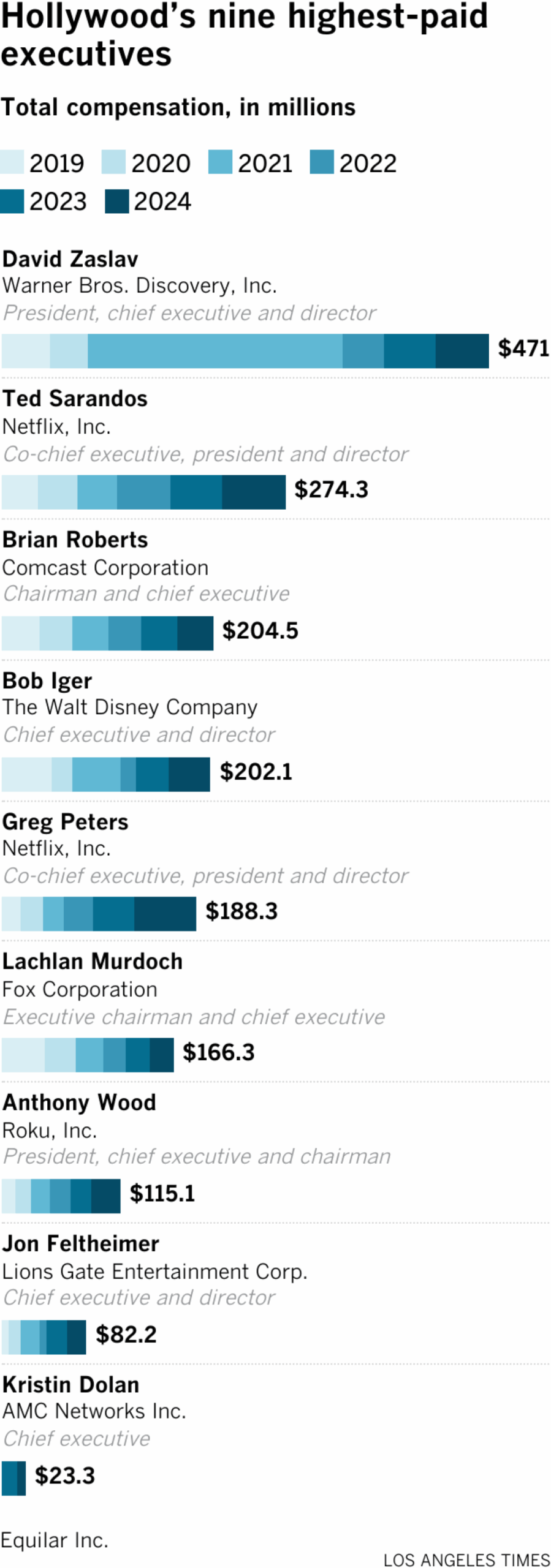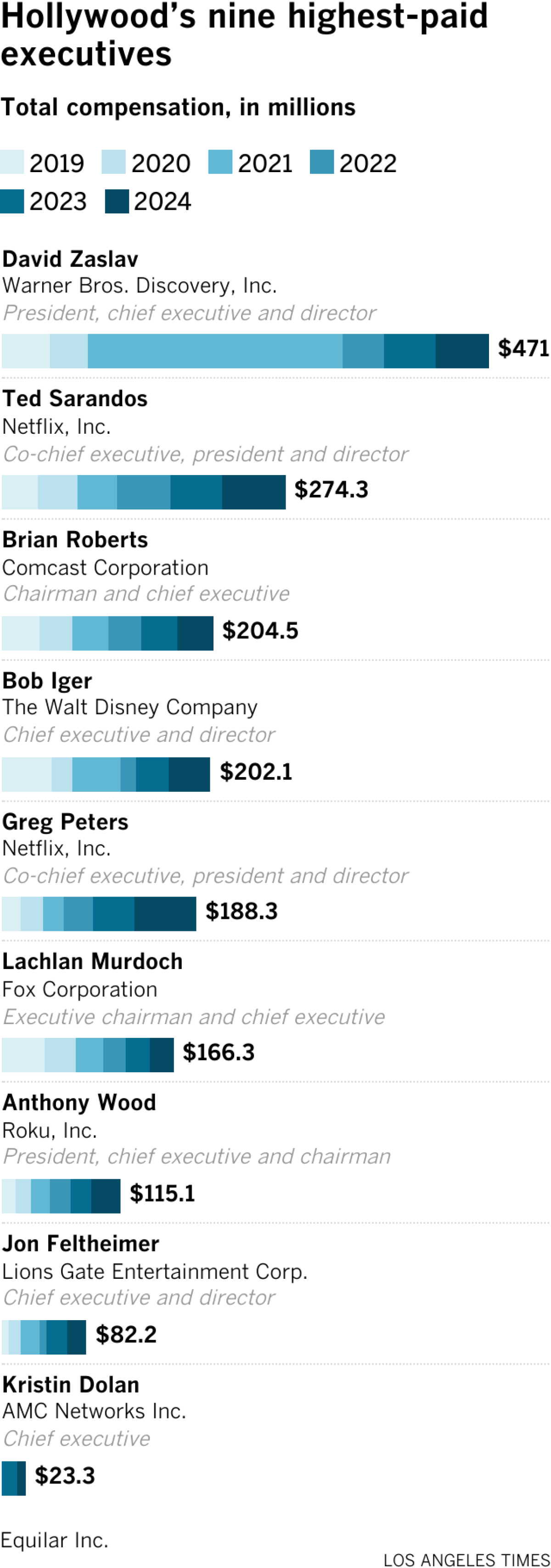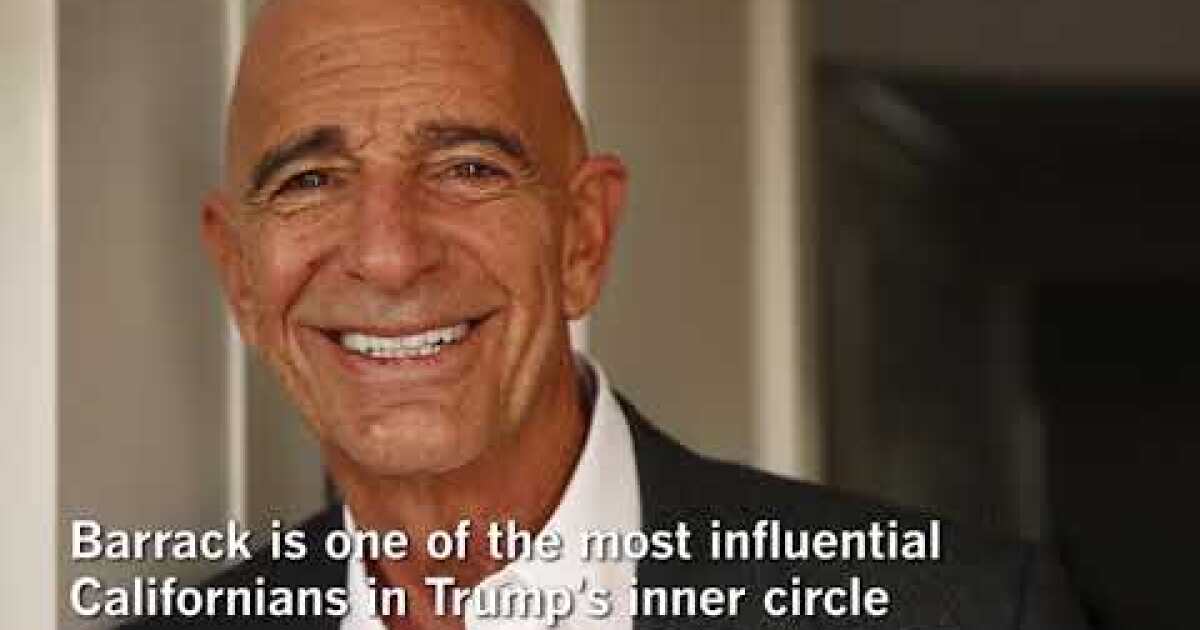Thomas J. Barrack Jr. drew worldwide attention for bailing out Michael Jackson when the singer’s Neverland Ranch was on the brink of foreclosure.
A couple years later, Barrack’s purchase of Miramax studios with actor Rob Lowe and other partners vaulted him into the Hollywood elite. Barrack was chairman of Miramax for six years.
Now, Barrack’s close friendship with Donald Trump has made him one of the most influential Californians in the inner circle of the president-elect. Trump put Barrack in charge of planning his Jan. 20 inauguration.
Barrack is the founder and executive chairman of Colony Capital Inc., a Los Angeles investment giant that manages more than $60 billion in assets, much of it for Arab clients.
As Trump prepares to take power, Barrack’s long business history in the Mideast — and his deep knowledge of its politics and its cultures — makes him a significant player in shaping Trump’s thinking on the region.
“That he’s sitting at the table with Trump should make everybody very happy,” said Lowe, one of Barrack’s best friends. “I know it does me.”
Over coffee at his Santa Monica mansion, Barrack said he declined a top role in Trump’s administration, telling the president-elect he could serve him better as a friend with “no skin in the game.”
For now, that means overseeing preparations for next week’s inaugural celebrations, a task Barrack described as “drinking out of 10 fire hoses.”
“It’s like putting on the Olympics in 60 days,” he said.
Barrack (pronounced BEAR-ick) leads a group of wealthy Trump supporters who have raised more than $90 million, he said, for the galas and ceremonies in Washington. Among them are casino tycoons Sheldon Adelson and Steve Wynn.
Mark Burnett, producer of “The Apprentice,” is working for Barrack on the inauguration night festivities. Trump’s toxic image in liberal Hollywood has kept big stars off the program.
Barrack befriended Trump in the 1980s. They were haggling over the Plaza Hotel, a Manhattan trophy that Trump was buying from oil tycoon Robert Bass, then Barrack’s boss. Trump was already a famous developer, so Barrack felt obliged to treat him with deference.
“We didn’t have that intersection that two big dogs have when they get to a fire hydrant; I wasn’t equal,” Barrack recalled.
Barrack and Trump developed a close friendship through three decades of raising children, weathering divorces and maneuvering among the top echelons of global finance and real estate.
Barbara A. Res, who was Trump’s chief of construction in the 1980s, recalled that Barrack was one of Trump’s few genuine friends.
“I always felt sympathy for Donald, because it’s very hard for him to have a friend,” she said. “Everyone who surrounds him wants to have a piece of him.”
The friendship gave Barrack a prominent role at the Republican National Convention in July. On the night Trump accepted the presidential nomination, Barrack was the last speaker before the candidate’s daughter, Ivanka, took the stage.
He told the audience that Trump “played me like a Steinway piano” in the Plaza Hotel deal. Left unmentioned was that Barrack’s boss got a good price, nearly $410 million, while Trump went so deep into debt — on that deal and others — that he soon lost the hotel in a bankruptcy settlement.
Barrack, a grandson of Lebanese Christian immigrants, grew up in Culver City. His father ran a grocery store; his mother was a secretary. In the family’s small stucco house, his parents spoke English with Barrack and his sister, Arabic and French with the grandparents.
Live coverage of the transition »
Barrack, impeccably fit at 69, has six children, ages 2 to 39. He works out daily and often surfs and plays polo around the world. He spends about a week a month at his neoclassical colonial home overlooking Santa Monica Canyon’s Riviera Country Club.
“When I get him on the phone, he’s as likely to be in Riyadh or Paris as he is to be in L.A.,” said Lowe, who joked that Barrack lives on his private jet. “He uses that plane the way my kids use an Uber.”
Barrack sees the jet as an essential tool for work.
“If somebody calls me on Sunday night and says I want to have breakfast with you in London at 8 o’clock in the morning, most of my competitors are too spoiled to do it — they’ll send somebody,” he said. “If I go, that’s my competitive advantage. And I don’t get jet lag.”
Last year, Barrack took Lowe to the Mideast. In Lebanon, they visited three Syrian refugee camps. One of them was in Zahle, Barrack’s ancestral village on his father’s side. It was heartbreaking, Barrack said, to see thousands of children left homeless by the wreckage of war.
Trump has vowed to block Syrian refugees from entering the United States, saying countries in the Mideast must set up “safe zones” where they can live peacefully in the region. Barrack recalled telling Trump how challenging that would be.
“The president-elect has a very good vision of what needs to be done, but it’s not that simple,” he said.
Trump’s critics, Barrack said, don’t realize how “tender and inclusive” he will be. “I go to my friends and say, ‘Get over it. He’s going to be so much better than you think.’”
Barrack served on Trump’s economic advisory council during the campaign. He also urged Trump to dial down the bombast, saying the volleys between him and Hillary Clinton were “disheartening.”
At the same time, Barrack started a super PAC, Rebuilding America Now, which spent more than $17 million slamming Clinton over donations that her family foundation got from what the ads called “Wall Street insiders” and “misogynistic regimes.” One of the spots accused her of looking the other way “on Saudi funding of terrorism.”
Some of Barrack’s friends and partners are dismayed by his embrace of Trump.
“I have absolutely no use for the president-elect, but that doesn’t mean I can’t like Tom,” said Richard Blum, a Barrack investment partner who is married to Democratic Sen. Dianne Feinstein of California. “He’s a very smart guy, and I hope Trump listens to him.”
Barrack’s big break came in the early 1970s, when he was an attorney at the firm of Herbert W. Kalmbach, President Nixon’s personal lawyer. The firm dispatched Barrack to work on a project in Saudi Arabia, where he played squash with a man who turned out to be a prince.
Barrack left the practice and spent the next four years in Saudi Arabia as an advisor to the royal family. At the time, Saudi rulers were using oil riches to transform the primitive Bedouin nation into a modern society with a mammoth construction program.
With few options for entertainment, Barrack spent nearly every night conversing in Arabic with men in their majlis, salons where he recalls learning patience and cultural adaptability.
“You’d sit sharia style and talk for six or seven hours,” he said.
Barrack’s time in the Mideast led to top executive jobs in real estate and finance, with a brief stint as deputy undersecretary at the Interior Department under President Reagan.
In 1991, Barrack opened Colony Capital. It specialized in bets on distressed assets, starting with bundles of bad loans that it picked up at low cost from federal regulators in the aftermath of the savings and loan crisis.
Colony later capitalized on another U.S. lending debacle, the 2008 economic crash. Colony bought tens of thousands of single-family homes at foreclosure auctions in California, Nevada and other states, then made money by renting them out as housing markets recovered.
Barrack said Colony was careful to avoid tossing families from their homes, but critics fault the nature of the business, with tenants replacing homeowners.
“The only reason they’re able to acquire those properties is because of the misfortunes of homeowners that went into foreclosure,” said Charles Evans, a senior lawyer at Public Counsel, a Los Angeles nonprofit that provides free legal services to the poor.
Barrack, whose family spends summers at his medieval chateau on the French Riviera, has become a top corporate player in France, where Colony for a time owned the Paris-St. Germain soccer team. Colony has been a major investor in French hotel and retail chains.
In 2008, when Jackson was on the verge of losing his Neverland Ranch in Santa Ynez, near Barrack’s Happy Canyon winery and polo fields, a mutual friend asked him to meet with the singer and review his finances.
Barrack said he told Jackson he could no longer spend $35 million a year when his income was $12 million.
“You either go back to work, and you make enough money to support your lifestyle, or you wind your lifestyle down to a level that you can live on four or five million dollars a year,” he recalled saying to Jackson.
See the most-read stories this hour »
Colony restructured Jackson’s debt, keeping Neverland out of foreclosure as Jackson went back to work. Jackson started rehearsing for a comeback tour that would never occur; he died in 2009. Barrack also rescued other celebrities from financial ruin, but declined to name any, apart from the photographer Annie Leibovitz, whose lifeline from Barrack was widely known.
Barrack’s biggest Hollywood play was Miramax. He and Lowe were on holiday on a boat in Sardinia when Barrack called Ron Tutor, the construction magnate, and asked about joining forces to buy the studio from Disney.
They believed that they could make money by minimizing future filmmaking and maximizing sales from the studio’s film library to Netflix and other outlets. With partners from Qatar, the trio formed an investment group that bought Miramax for $610 million.
Barrack largely avoided the trappings of Hollywood. Others in his position, Lowe said, would have rushed to “make Leonardo DiCaprio’s passion project about sub-Saharan Africa.”
“Tom kept his eye on the ball,” Lowe said.
Barrack said the group made a solid return last year when it sold the studio for an undisclosed amount to investors in Qatar.
Now, as Trump’s administration takes shape, Barrack is content to watch from afar. He wants to stay near his youngest children in California and to see through Colony’s merger with two real estate companies.
If Trump needs him on the inside, Barrack said, the timing might be better once his advisors settle into their new roles and “everybody learns to play more nicely in the sandbox.”
“I would do anything he asks,” Barrack said.
[email protected]
@finneganLAT
ALSO:
U.S. intelligence report says Putin targeted presidential election to ‘harm’ Hillary Clinton’s chances
Only Russia’s top officials could have authorized campaign data thefts, U.S. intelligence officials testify
7 things you need to know about the future of Obamacare



































